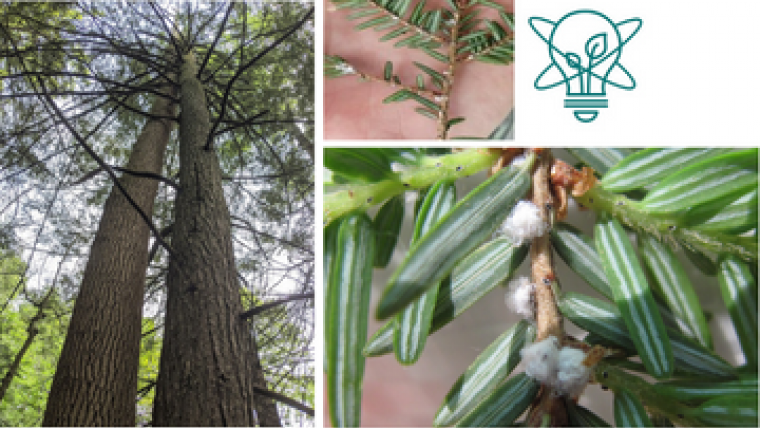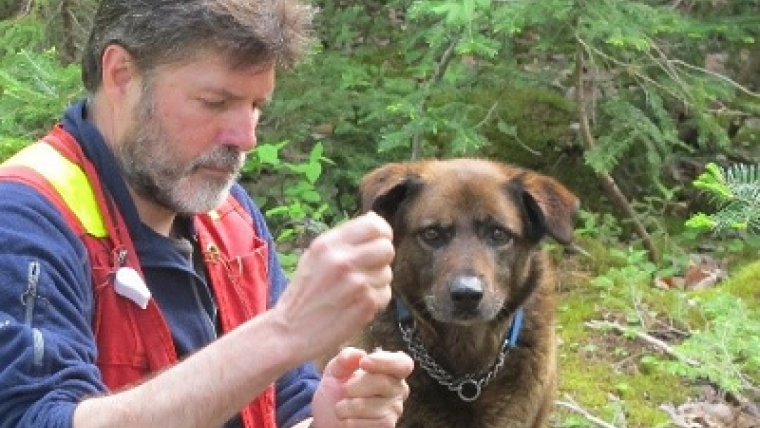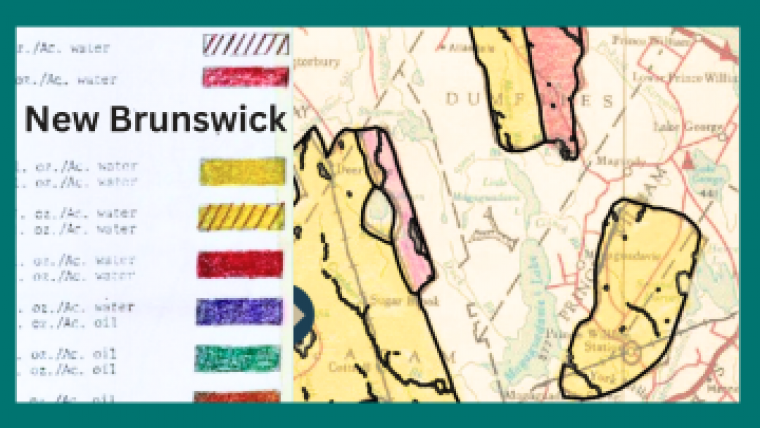What’s that crawling through the forests of Prince Edward Island?
Beetle pheromones are helping scientists record hundreds of species new to the Island
June 2020
By Cameron Squance
Natural Resources Canada (NRCan) scientists literally have their hands full as they search all corners of Prince Edward Island (P.E.I.) to learn more about the beetles crawling through its forests.
Jon Sweeney, a research scientist based at NRCan’s Atlantic Forestry Centre in Fredericton, New Brunswick, first came to P.E.I. with his team in 2018 and 2019 to set up close to 40 field traps.
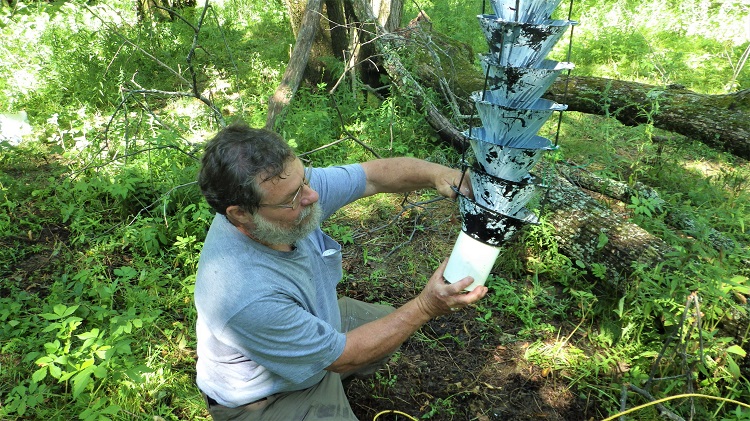
NRCan researcher Reggie Webster checking a funnel trap.
“I noticed that P.E.I. only had 899 beetle species recorded,” says Jon. That may seem like plenty, but about 2,700 beetle species were known to be thriving in nearby New Brunswick and Nova Scotia. So Jon had a strong suspicion there was more to the story. “I thought, ‘There’s some pretty common beetle species that probably live on P.E.I., but nobody’s detected them in the area. So, lets just go over and run one of our trapping experiments over there.’”
Lean, green trapping machines
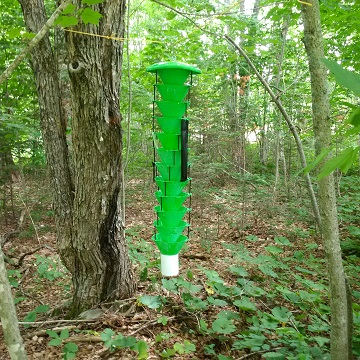
A green funnel trap located at one of the research sites
He set up experiments with two main goals for his team: to explore beetle species biodiversity on the Island, and to evaluate different trapping techniques for the early detection of the well-known emerald ash borer and other potentially invasive forest pests.
They set up three different research sites on P.E.I., each with twelve funnel traps, the same kind of traps that the Canadian Food Inspection Agency uses to catch bark and wood-boring beetles. For these species, which are more active at lower levels, six black traps are set about 1.5 metres from the ground, while six green funnel traps target the emerald ash borer and similar species up in trees.
The design of both traps is simple but effective. “It’s just a series of funnels —in this case we have 12 that stack on top of each other,” explains Jon.
The scent of a beetle — the attraction of pheromones
The baiting of the traps is simple, too. “There’s a cup at the bottom where we put saturated table salt and water, and we use things like the pheromones that the beetles emit.” Pheromones are chemicals produced by beetles that act as messages to other individual insects. They’re usually described as a kind of irresistible “cologne” that’s important to insects’ mating rituals.
In this case, Jon used longhorn beetle pheromones, which are easily synthesized and commonly used in lures, and also ethanol, a plant-based alcohol that’s strongly attractive to many beetles.
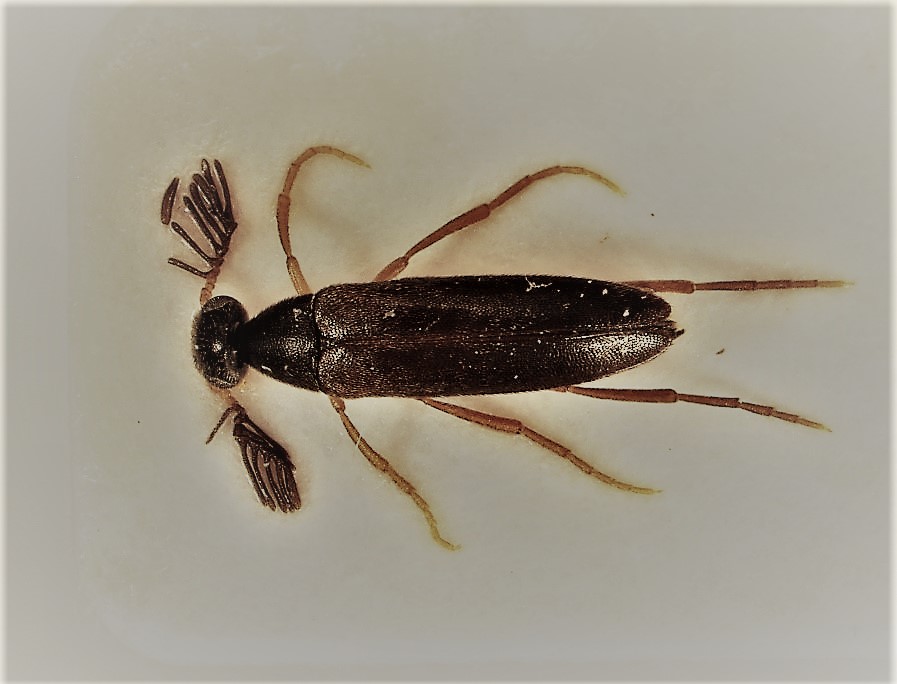
A trapped beetle identified as Pelecotoma flavipes, found only in North America.
More than just potato beetles on Spud Island
This particular pheromone cocktail is proving to be wildly popular, and the experiment is uncovering many previously unrecorded species.
In 2018, the researchers caught 218 species new to the record book. A year later, they identified 42 more, bringing the total number of known beetle species on P.E.I. to 1,368.
As they were counting and cataloguing the bugs, the researchers discovered something else: not all beetles are created equal. They vary widely in minute points of detail, and some of the characteristics that distinguish them from other beetles can be very hard to spot with the naked eye.
For these cases, scientists dissect specific parts of the insect and take highly accurate diagnostic images so they can compare these features down the road.
Beetles can help indicate overall forest health
The details may be small, but their significance and usefulness are big.
“Knowledge of beetle biodiversity on the Island is particularly important,” says Jon. “Knowing what species are present at this exact point in time allows us to monitor changes over time in our natural environment, whether from habitat loss, climate change or other reasons.”
And the hunt for more information never ends: as it happens, Jon’s traps have yet to capture a single emerald ash borer in the area. But science marches on, as it must, and research is continuing into 2020 with plans to add another trapping location.
Beetle fun facts:
- Beetles are the largest order of insects, with about 400,000 recorded species; compare that with the 5,416 species of mammals
- They’re found in almost every habitat except the sea and the polar regions
- Over 300 species are used as human food in various parts of the world, mostly at the larvae stage
- Some species are serious pests, such as the mountain pine beetle, which destroys a wide range of pine trees
- On the other hand, some of them are beneficial. Our familiar lady bugs (the Coccinellidae Lady Beetles), for example, feed on aphids, which are particularly destructive pests in the agriculture and forestry sectors.
Page details
- Date modified:
